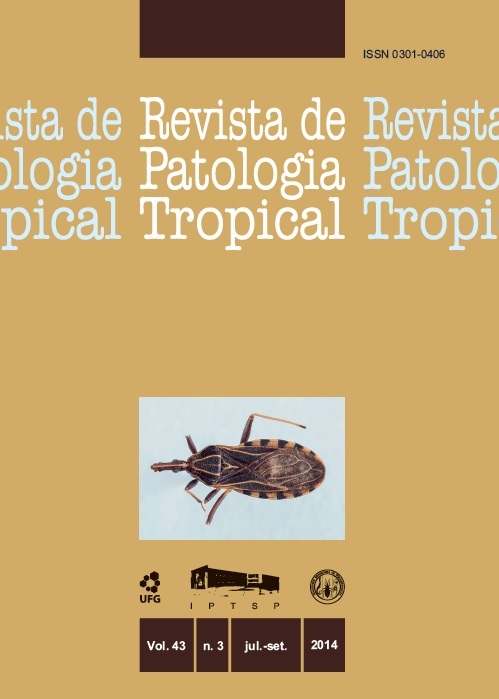SEROEPIDEMIOLOGY OF TOXOPLASMA GONDII INFECTION IN STUDENTS OF VETERINARY MEDICINE AND OTHER COURSES OF PUBLIC UNIVERSITIES IN RIO DE JANEIRO STATE, BRAZIL
DOI:
https://doi.org/10.5216/rpt.v43i3.32218Keywords:
Toxoplasma gondii, veterinary medicine, students, seroepidemiologyAbstract
The aim of this study was to estimate the serum prevalence of Toxoplasma infection in two groups of university students: Veterinary Medicine (VM) and Other Courses (OC). Students from two public universities in the state of Rio de Janeiro were investigated to identify risk habits and behaviors for Toxoplasma gondii infection, and to guide primary prevention. All 839 students answered a questionnaire about habits and behaviors (347 OC and 492 VM). A serum prevalence of 21.8% was observed by indirect immunofluorescence (IFA) and ELISA. No statistically significant difference was observed between students of the universities. Serum prevalence (IFA and ELISA IgG) was 16.1% in VM and 29.9% in OC. Six students were IgM seropositive, of which five were only positive in ELISA and one was positive with both diagnostic techniques (ELISA and IFA). Among those students, four were in the control group from UFF and one in each group from UFRRJ. The prevalence of students seropositive for toxoplasmosis was low in both universities and the results obtained suggest that veterinary students are probably not exposed to a higher risk than the general population for acquiring toxoplasmosis. Age, contact with cats, consumption of undercooked or raw meat, contact with campus soil and ignorance of prophylactic measures for toxoplasmosis were positively associated with prevalence of infection by T. gondii.
Downloads
Downloads
Published
How to Cite
Issue
Section
License
The manuscript submission must be accompanied by a letter signed by all authors stating the full name and email address, confirming that the material has not been published or is under consideration for publication elsewhere, and agreeing to transfer copyright in all media and formats for Journal of Tropical Pathology. The authors will not be paid for published articles. They are solely responsible for the content of those articles, even if the Editor holds the right to adjust them to the norms of the journal.
The reviewers will not be paid for the peer review process.

